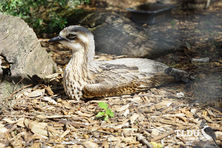
Shoppers Feedback:
Jan 17, 2017
Hello Ros,
I have now paid the invoice, but I would like to write to you just to say a big THANK YOU for getting me the Penguin!
The ChatterMate Penguin became a nice memory for me when I was in New Zealand, and I am so greatful to you for arranging so that I could have it! :-)
Thank you so much!!!!!!!!!!!
Regards,
Malin
Hi Ros,
Many thanks for your very kind email. I really appreciate your prompt reply!
I appreciate your advice regarding the decorations and customs. These are a gift for my daughter’s exchange student family so when she returns home on the weekend I will show her and see if she loves them as much as I do!
Thanks so very much again - I am truly grateful for your kind assistance.
Kind Regards
Bernadette
Ros,
Thanks again for the great customer service. It's a refreshing change!
Best regards,
Trevor
Hey Roz,
Thank you for your emails. Just loved my first order. The cute little Aussie bush critters are going to be used for an office Christmas decoration. My colleagues also liked them and talked about making an order to your site. I'll send you a photo when completed.
I'll be ordering more to send to my daughter's host family in America.
Fabulous service from you.
Kind regards,
Michelle
Thankyou. Order arrived today. One very happy grandson with his new beastly binoculars.
Regards,
Irene
- Home
- Wild Wonders
- Shop
- Aromas of Australia
- Australian Made
- Books
- Book Marks
- Christmas Decoration Sale
- Christmas Decorations
- Clocks
- Drink Holders
- Garden & Outdoor
- Gift Wrapping & Cards
- Home & Giftware
- Jewellery
- Keyrings
- New Products
- Pencils & Pen Holders
- Photo Frames
- Plush Toys
- Plush with Sound
- Sheepskin Rugs
- Stationery
- Stone Carvings
- Toys & Games
- Travel Goods
- Wedding
- Wild Figurines
- Wildlife Safety Products
- Wind Chimes
- Wine Charms
- View All Products
- Wildlife
- Australiana
- Explore
- Contact Us
Bush Stone Curlew

Quick Facts
| Length: | - |
| Height: | 58 cm |
| Weight: | - |
| Colour: | - |
| Habitat: | - |
| Food: | Insects, molluscs, small lizards, seeds and occasionally small mammals |
| Predators: | Foxes and Feral Cats and land clearing |
| Status: | Secure in NT, QLD & WA. Rare in SA. Endangered in NSW & VIC. Not Present in TAS |
The Bush Stone-curlew, or Bush Thick-knee, is a large, slim, mainly nocturnal, ground-dwelling bird. It is mostly grey-brown above, streaked with black and rufous. It is whitish below with clear, vertical black streaks. The bill is small and black, and the eye is large and yellow, with a prominent white eyebrow. Both sexes are similar. Young Bush Stone-curlews are similar in appearance to the adults, but are paler, and a little browner in colour. Bush Stone-curlews are nocturnal birds (night birds), doing all their feeding and other activities at night.
The Bush Stone-curlew is quite an unusual looking bird, and unlike any other bird found in Australia. The related Beach Stone-curlew, has a much larger bill and more boldly marked face, and has little or no black streaking on the body.
The range of the Bush Stone-curlew extends throughout Australia.
Bush Stone-curlews have a wide-ranging diet, but prefer to feed on insects, molluscs, small lizards, seeds and occasionally small mammals. Feeding takes place at night. During the breeding season, nesting birds will search for food in the vicinity of the nest site, while at other times, birds may travel large distances. All food is taken from the ground.
Bush Stone-curlews have a remarkable courtship dance. Individuals stand with their wings outstretched, their tail upright and their neck stretched slightly forward. The birds will stamp their feet up and down, like a soldier marking time. This courtship ritual is repeated for an hour or more at a time and is accompanied by loud and constant calling. Eggs are laid in a shallow scrape in the ground and both adults share the incubation and care for the young.
The Bush Stone-curlew was formerly quite common, but has declined in numbers through loss of habitat and predation by foxes and feral cats. It can be seen on golf courses and even in cemeteries.
Last Updated: Wednesday 8th January, 2014
BUSH e-TELEGRAPH
Signup for our monthly newsletter the "e-Telegraph"
Quick Links
Home | The Beginning | About The Land Down Under | Wild Wonders | Advertise on Wild Wonders | Christmas Decoration Sale | Christmas Tree Decorations | Drink Holders | Plush with Sound | Stone Carvings | Wildlife Wine Charms | Freebies | Australian Wildlife | Help Our Wildlife | Australiana | Photo of the Month | Explore The Land Down Under | Contact Us | Legal Notices

